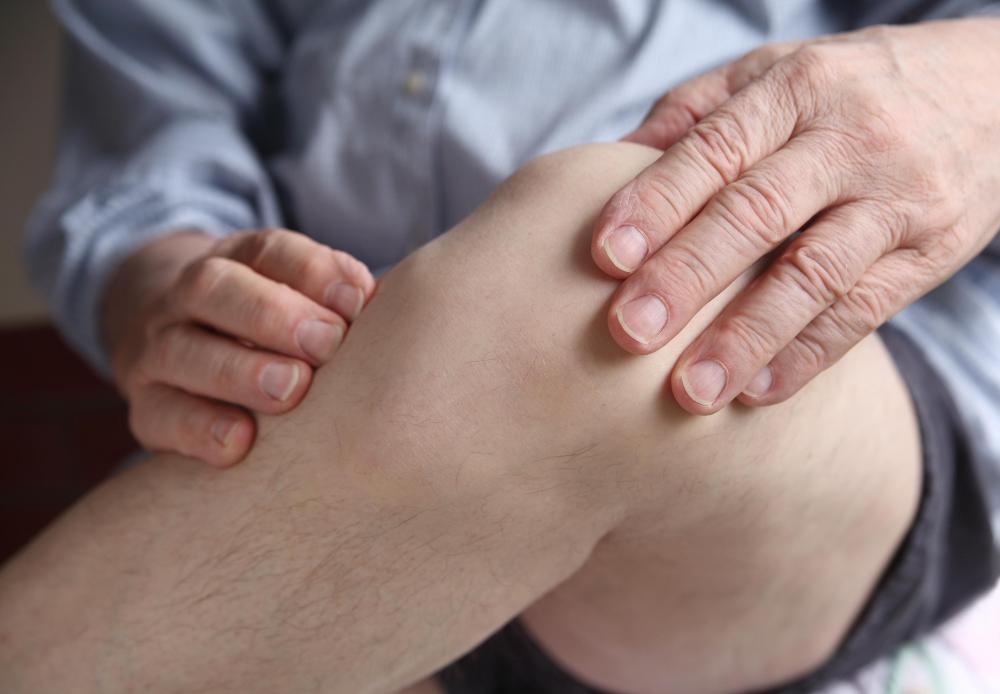At TheHealthBoard, we're committed to delivering accurate, trustworthy information. Our expert-authored content is rigorously fact-checked and sourced from credible authorities. Discover how we uphold the highest standards in providing you with reliable knowledge.
What is Synovitis?
The painful inflammation of the delicate synovial membranes that line the joints is known as synovitis. Associated with several acute and chronic conditions, synovitis most frequently manifests in the presence of rheumatoid and juvenile arthritis. Treatment for this type of joint inflammation is generally dependent on the presentation and severity of symptoms and usually involves the administration of anti-inflammatory medications. The presence of synovial inflammation in young children may contribute to the development of an episodic, secondary arthritic condition known as toxic synovitis.
The development of synovitis generally coincides with the presence of an existing inflammatory condition that adversely affects the joints, such as rheumatoid arthritis. Lining the joints, the delicate synovial membrane secretes fluid to promote joint lubrication, functionality, and enzyme production. When the synovial membranes become inflamed, the life cycle of the cells that comprise the synovial fluid mutates. The rapid cell division and release of enzymes that results acts as a catalyst to promote chronic inflammation and joint erosion.

Synovial inflammation often presents with patterned symptoms that include a swollen, spongy appearance of the affected joint. Increased blood circulation, which is a common immune response to inflammation, prompted by the joint degeneration serves to cause warmth within the affected joint. In the presence of swelling and inflammation, an analysis of the gathering of synovial fluid is utilized to aid with diagnosing this painful condition.

The most common test performed to confirm synovitis is known as a synovial fluid analysis. The administration of this test takes less than an hour and is performed with the aid of a local anesthetic. Following an initial examination of the affected joint, a physician may use a small needle to take a sample of synovial fluid to send for laboratory analysis. Once a diagnosis has been made, treatment options often involve the administration of anti-inflammatory medications, such as a corticosteroid, to reduce joint irritation and alleviate discomfort.

Children and young adults with juvenile arthritis are susceptible to developing toxic synovitis, a secondary arthritic condition. Generally affecting prepubescent boys, toxic synovitis affects the hip joint causing discomfort, fever, and impairing one’s ability to walk normally. Temporary in its presentation and generally lasting less than two weeks, this discriminatory form of synovial inflammation may be detected with the aid of various diagnostic tests.

Imaging tests, including ultrasound and X-ray, and the administration of blood tests, including a complete blood count (CBC), are frequently utilized to confirm a diagnosis of toxic synovitis. Due to the transient nature of this condition, extensive treatment is generally not necessary. The individual is often given a non-steroidal anti-inflammatory drug (NSAID) to ease inflammation and discomfort. Depending on the severity of an individual's symptoms, his or her activities may be restricted to ease discomfort. There is no risk of permanent damage or disability associated with this presentation of joint inflammation.
AS FEATURED ON:
AS FEATURED ON:


















Discuss this Article
Post your comments